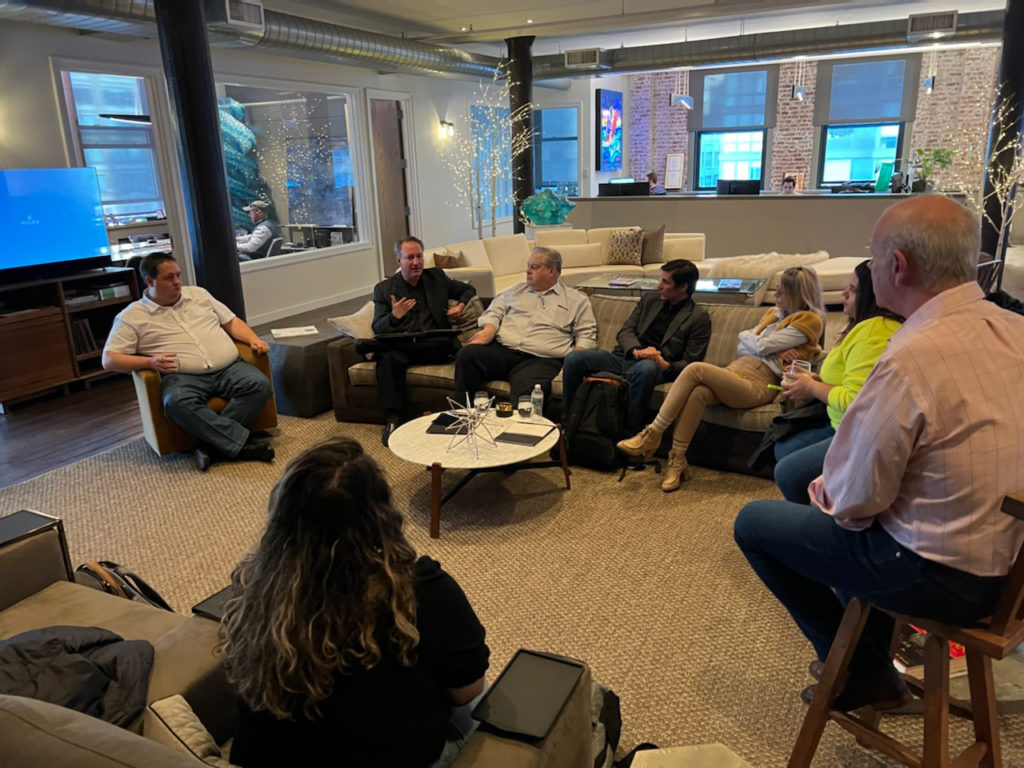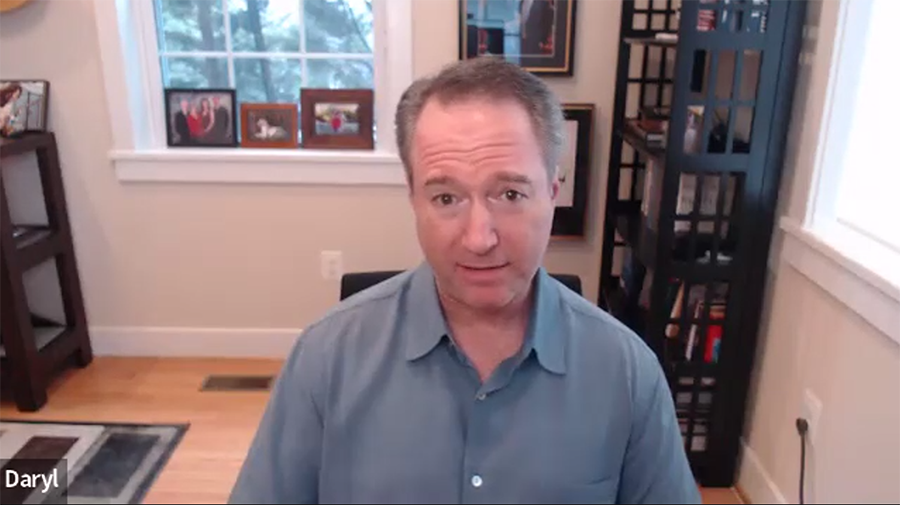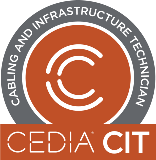
PART 1: Identifying Membership ‘Stress Points’
In a Zoom interview last week, I sought to take more of a measure of the man who now runs CEDIA, its new Global President and Chief Executive Officer Daryl Friedman. We first met, and I first told you about Friedman, back when his selection was first announced to the world just a little over 100 days ago. Friedman was in a series of round-robin press interviews and we only had a few minutes to interact. Now, 106 days later (at the time of this interview) he’s traveled the country, gotten his feet wet, and had much more depth of thoughts to share with Strata-gee readers.
See more on Friedman and his plans for CEDIA
First off, let me say I must be losing my touch. Normally, top executives are nervous when speaking to Strata-gee (or so I’ve been told over the years), as they understand that I honestly and directly report what they say. And this nervousness is usually especially true in the case of an interview with CEDIA executives, as my coverage over the years has been at times starkly honest and often critical.
But on this day, Friedman seemed completely relaxed and ready to – as a tennis player might say – return volley. Smiling easily, friendly, and effortlessly engaging – even during the initial small-talk banter – we warmed up the big event.
Job #1 – Find Members ‘Stress Points’ by Listening to Members
In our previous discussion, Friedman had told me that job #1 was to ascertain the members’ “stress points” or areas of significant friction that needed addressing. So this was my starting point. Had Friedman been successful in determining these stress points?

Before he answered that question directly, he told me that he had gone on a series of listening tours around the country – around the globe actually, as he started in London. He also held some sessions in New York, both with a manufacturer (Lutron) and a member (Gilmore’s Sound Advice). Coming up soon will be sessions in Los Angeles for even more feedback.
Feedback Aligned with His Initial Assumptions
Also, his email address is published on CEDIA’s website, and he has received a lot of feedback from members regularly sending him email messages. He tells me he answers them all.
The stress points he uncovered were not too different than the assumptions he had made as he did some initial homework preparing for the role. However, he did say that the order of priority of these stress points changed some, “and, frankly the urgency in terms of the needs of our members,” he said.
Industry-Wide Labor Shortage
The first stress point that he had initially identified and has been reinforced with his member interaction is the issue of an industry-wide labor shortage.
The labor shortage is something that I’ve heard repeatedly. It was the first thing that comes up in every meeting. Workforce pipeline issues are not something that we can [simply sit back and] think about and plan for – this is something we have to do [something about] today. It’s a real pain point for the membership. It’s the biggest issue that I’ve heard about consistently and across the board.
Daryl Friedman, CEDIA Global President and CEO

Need to Build Impact & Value of CEDIA Brand
The second stress point, which Friedman characterized as more of a long-term issue, but was also prominent in many of his discussions, was the need to build the CEDIA brand into something more meaningful and more impactful to consumers; as well as to architects, builders, and designers.
“And really, [we need] to make that brand [CEDIA] much more powerful,” Friedman said members have repeatedly told him.
Some Progress Made, More Work to Do
The good news is that Friedman says the association has already begun to execute a strategy of improving the search engine optimization and he says if you did a comparison of search results from even just two months ago, it has already improved dramatically. So when anyone turns to google to seek help on a project, the CEDIA brand is coming up much more frequently as a trusted resource. “We have a great re-energized and re-organized marketing team that’s working on that,” Friedman told me.
But we have to do a lot more. Telling that story about CEDIA is going to be key. Convincing the architects, the builders and designers that if they want to have this done right they should work with an integrator from the beginning of the project. And, ultimately, telling the consumer that having a connected intelligent home is not something you do yourself. You don’t do your own medical procedures, you don’t let just anybody teach your kids, you use professionals. And this is something that you should use professionals for.
Daryl Friedman

Improve the Impact and Recognition of CEDIA Certifications
And the last stress point Friedman had previously mentioned was the CEDIA certification program – members feel the association needs to build the impact and recognition of CEDIA certifications. Strata-gee recently reported that CEDIA had received worldwide accreditation for its Cabling & Infrastructure Technician (CIT) certification. This recent development was the result of a couple of years worth of hard work by the CEDIA staff before Friedman arrived on the team – “So I get to take credit for other people’s work but frankly, the certification team has done an amazing job of getting this accredited.”
Getting independent recognition for the quality of the certification programs is the type of effort that additionally helps build the CEDIA brand’s impact, Friedman told me.
In fact, at one of my meetings yesterday, an integrator said to me, I understood you have certifications. I didn’t really understand the value of it until it became worldwide accredited. So you know, great kudos to the volunteers and staff who’ve been doing that work for the last year or two to get the [CIT program] accredited. That’s just the beginning. This is all part of the same story about making the CEDIA brand mean something to the end user. Having that international accreditation is a big part that gives us the credibility – sort of a stamp of approval by a worldwide accrediting body.
Daryl Friedman
END OF PART 1
Check back next week when Friedman tells the story of speaking with a long-time CEDIA member whose insights upset him…learn about transactional and relational benefits of membership…why The CEDIA Designer (aka The Cinema Designer) had to go…his thoughts on the difference between a successful association and a struggling association…and much more.
Learn more about CEDIA by visiting: cedia.net.






Same CEDIA BS and rhetoric we have heard for decades. It’s a failed organization and he is just managing its rapid decline.
Greg,
I certainly understand how you feel about this. But I’d like to suggest you hold your fire until you’ve seen the entire report (Part 2 is coming next week). You may still end up in the same place…but you may not.
There will be plenty of time to fire your cannons then if you feel the same way.
I know that often new CEDIA administrations sound like “the same old wine in a brand new bottle.” But from my viewpoint, Friedman had some fresh perspective. Remember, not long ago a previous CEDIA chairman banned anyone at the association from even talking to me. Friedman did not duck any of my questions and provided me with additional information I requested – information that in the past was considered secret – within 48-hours of my request.
Dip back in after the remainder of my profile appears and let me know what you think then.
THANKS for contributing!
Ted
Greg,
It’s unfortunate that this is your perspective, but history lets us know that it is understandable.
All I can say is that I believe a person should always be measured not by their words, but by their actions. What I can tell you is that in the just over 100 days that I have personally known Daryl, he has followed through with action on every single item that I have brought to him. (And those that know me, know I don’t usually come with a short list. )
I think it’s important that we give him some grace as he steps into this role as we all know that it won’t be easy. Let’s watch his actions and better yet, rather than be doom and gloom, let’s offer our knowledge, our experience and our support. This isn’t an association of one, it is OUR industry association, we should all want to help support it and make it better.
I’d love to have you join me in supporting it, I’ll understand if you choose not too, but please know I’ll be in the trenches with many others working to help make this organization what I know it can be….feel free to reach out any time.
Amanda
Thanks for sharing your thoughts Amanda.
Ted